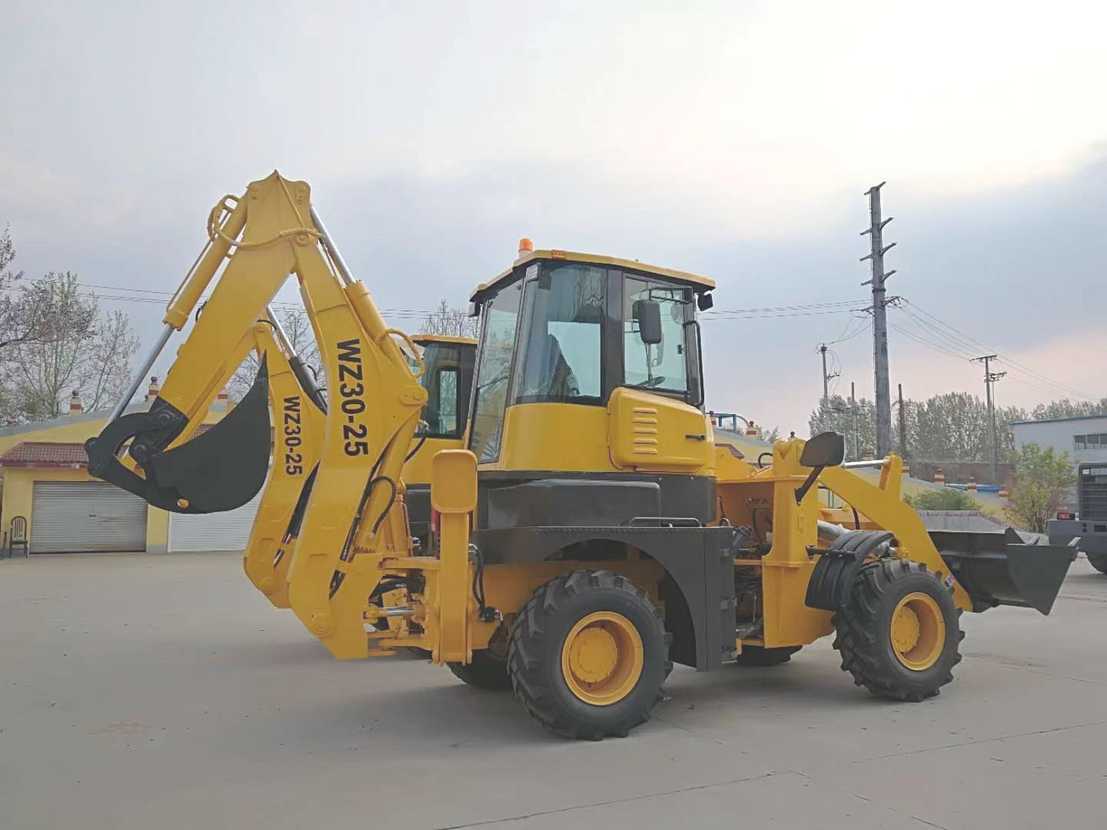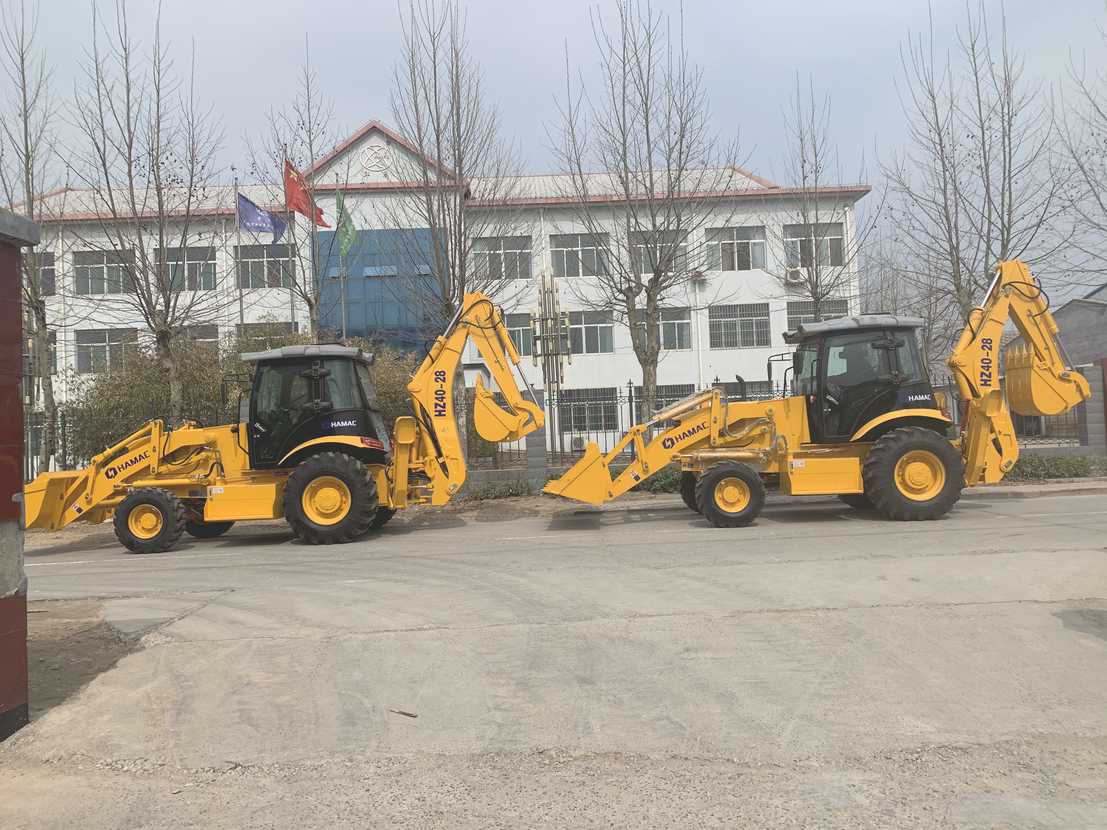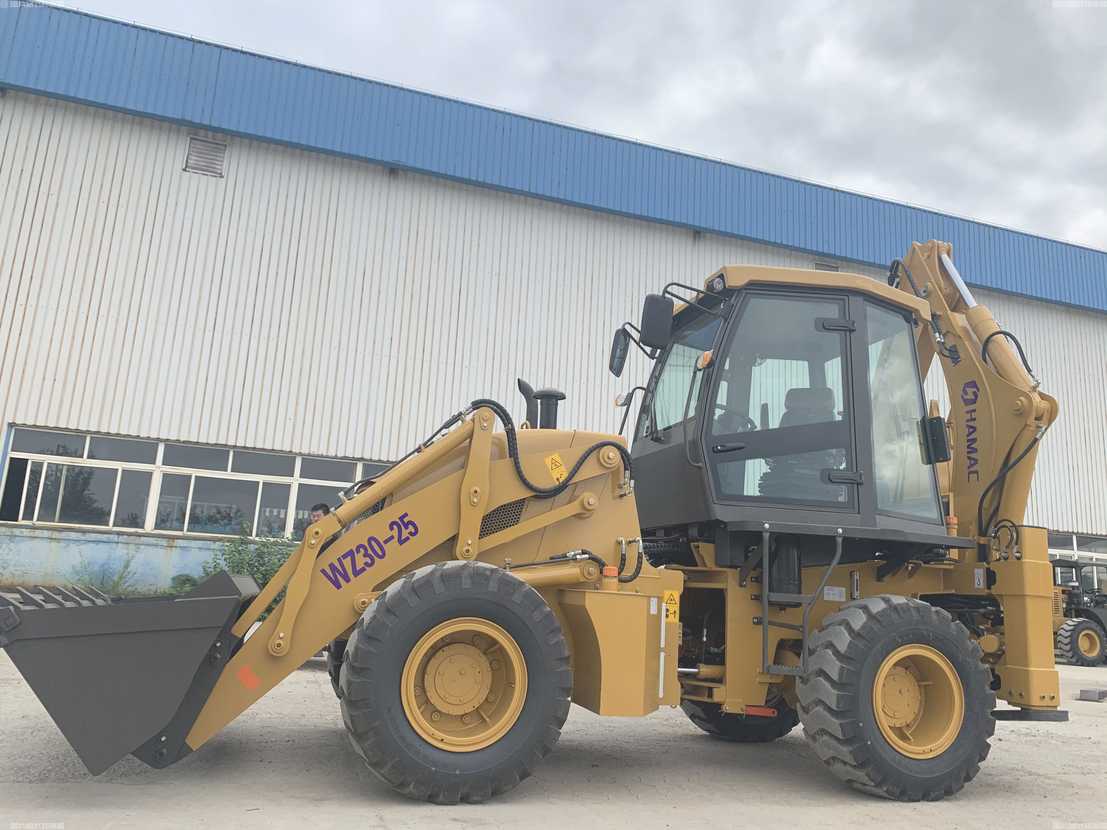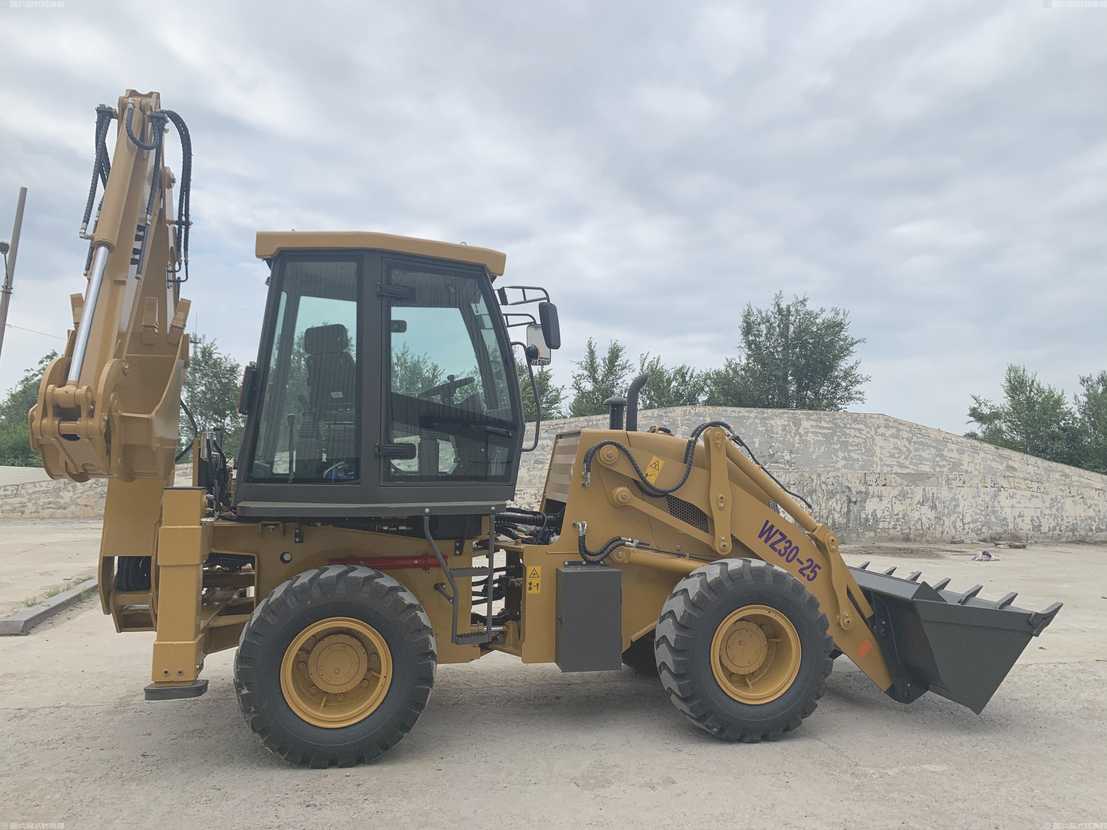
How to operate a backhoe?
Source: Hamac Machinery
How to operate a backhoe? Backhoe excavators, widely used in construction, landscaping, and agriculture worldwide, are versatile machines with a billion-dollar sales market globally. They are reliable multi-functional tools offering unparalleled capabilities in various industries. Understanding how to operate a backhoe is crucial for maximizing its potential in these fields.
Whether you are familiar with backhoe excavators or not, understanding the most basic safety regulations and operating procedures is crucial. In this guide, we will discuss how to operate, basic operating steps, and some safety tips for using a backhoe to prevent accidents.
What is a Backhoe Excavator?
A backhoe excavator is a multi-functional industrial tractor with two main functions. As the name suggests, a backhoe excavator can dig and load, with the boom and dipper located at the rear and the bucket loader at the front. The boom and dipper allow you to dig, from trenches to loosening soil, and to lift and place materials. The front loader allows you to scoop and move soil, such as backfilling and leveling many grounds. With the seat rotating 180 degrees, you can easily switch from front to back as needed.


Backhoe excavators are designed for medium to small projects. They are widely used in urban engineering, construction, and agricultural environments. Typical backhoe loaders, such as the Cat® F-Series excavator loader, have a depth of about 14 feet and a load capacity of over 2,400 pounds, making them more powerful than they appear.
The compact structure of the excavator loader, with two smaller front wheels and two larger rear wheels, makes these machines highly maneuverable in narrow workspaces, where larger specialized machines may struggle to operate efficiently. That’s why you might find yourself behind a backhoe loader – they’re not too big for ordinary public roads. Backhoe loaders are one of the most reliable heavy machinery in the world, helping to increase productivity and safely accelerate project progress with less effort.
When operating a backhoe for the first time, it is important to be familiar with its various parts. Understanding the basic structure of a backhoe excavator and its uses will help you learn how to operate the excavator safely. Here are the basic components of a backhoe excavator, their uses, and functions:
Tractor: The core of a Caterpillar backhoe excavator is the tractor, which is an all-terrain vehicle capable of driving on uneven terrain due to its evenly distributed weight and heavy-duty tires. Like all vehicles, the backhoe excavator’s cab features controls such as a steering wheel, throttle, and brake pedal. Depending on the model, the backhoe may be fully enclosed or partially covered.
Front Loader: At the front of the tractor is a hydraulic loader bucket that can be controlled vertically. The loader can lift and move loose materials, overturn debris, or clear dust. The front loader is compatible with different Cat mountain work tool attachments for further multitasking.
Backhoe: The backhoe is the rear component of the backhoe excavator. It consists of a boom and dipper (or bucket) with working tools attached. The stick adjusts vertically like an elbow joint. At the other end of the dipper or bucket is the tip of the dipper.
Stabilizer Legs: There are two stabilizer legs behind the rear wheels of the backhoe. Engaging the stabilizer legs during excavation can lift the wheels off the ground, reducing weight and relieving the tractor’s burden. Stabilizer legs are an important safety feature that protects the equipment and prevents the backhoe loader from tipping over.
How to Operate a Backhoe Excavator
To operate a backhoe correctly and safely, a considerable amount of practice is required. It takes time to master and is not something that can be solved overnight. When learning how to use a backhoe excavator, it is important to start slowly. Here are some tips for safe operation:
Adjust the Cab Settings: Enter the cab and make necessary ergonomic adjustments, such as seat depth and height, steering wheel tilt, and pedal angle. Familiarize yourself with the joystick controls, throttle, and locking mechanisms for the loader and backhoe, as well as accessories like lights, wipers, and horns.


Test the Equipment: Start the engine and allow it time to warm up. Then, test your tools. Engage and release the stabilizer legs. Gently raise and lower the backhoe boom and front loader to feel their power.
Drive Slowly to Your Work Area: Raise and secure the boom, stabilizers, and loader. Release the parking brake and shift the transmission into forward gear. Drive slowly forward, only stopping in first and second gears. Backhoe excavators will produce a lot of bounce, which is normal, but if it feels too bumpy, slow down.
Park the Loader and Engage the Stabilizer Legs: Drive the loader to a flat, obstacle-free test work area. Remember, the boom swings to the right, so you need enough lateral clearance as well as front, rear, and overhead clearance. Lower the stabilizer legs until the rear wheels lift off the ground, but keep them as low as possible to the ground to maintain stability. Next, fully raise the front wheels to clear the ground completely in their lowered position. If you are on a slight slope, adjust the stabilizer legs left and right as needed to keep the rear of the machine level.
Test the Backhoe Boom: Rotate the seat so you are facing backward (toward the backhoe end). First, unlock the boom by using the lever or release mechanism. Use the left joystick control to gently push away from you, lowering the boom to the ground. Pull the joystick toward you to raise the boom, and perform this operation in reverse. Moving the control left and right will rotate the boom accordingly.
Test the Backhoe Boom and Bucket: Using the right joystick control, you can now test the backhoe boom and bucket. Pull the control toward yourself to move the boom and bucket toward the cab. Perform the reverse operation by pushing the control away from you to extend the boom and bucket outward. Moving the control to the left will curl the bucket for excavation. Moving the control to the right will release the bucket for dumping.
Continue Testing: After independently testing each control movement, you can start putting them together for fluid movement. Continue gently repeating these controls until you can operate the backhoe comfortably.
Test the Loader: Raise and lock the backhoe boom and stick, securing them in place, then rotate to the front of the cab. Release the stabilizer legs until all four wheels are back on the ground. Flip the machine so the loader is now facing the dug hole. Lower the front bucket, drive forward, slowly pushing material back into the dug hole, lift and lower soil to backfill the hole. To compact the backfilled hole, drive over it to compact the ground. Reverse the loader, then use the bucket to drive back over the area. This will help smooth the terrain.
After completing some test runs, you should have an understanding of how to operate a backhoe loader. Continue practicing, and don’t forget to regularly read the “Operation and Maintenance Manual” to fully understand the functions of the backhoe loader.
Whether you are a novice or an experienced equipment operator, maintaining the most important safety tips is essential for operating a backhoe excavator. Even those who have been using loaders for many years need occasional refresher courses to prevent accidents.
The backhoe loader is a reliable and versatile heavy machine that can be used in a variety of situations. However, as with any machinery, familiarity with how to operate a backhoe correctly is essential. This ensures that you operate the machine as expected, preventing accidents and unnecessary wear and tear.

Wheel Loader
Wheel loader is a kind of shovel transportation machinery widely used in highway, railway, port, wharf, coal, mine, water conservancy, national defense and other projects and urban construction.

Backhoe Loader
Backhoe Loader,4×4 compact tractor loader backhoe,loader backhoe, loader excavator,compact backhoe loader,tractor loader backhoe for sale,compact tractor loader backhoe for sale

Wheel type Excavator
The wheeled excavator adopts a famous brand engine with high power and low fuel consumption, and the hydraulic system of the whole machine adopts imported hydraulic components, which have the characteristics of high reliability, authenticity, safety and environmental protection, comfort and convenience.

Skid Steer Loader
Skid steer loaders are mainly used in situations where the work site is small, the ground is undulating, and the work content changes frequently. At the same time, it can also be used as auxiliary equipment for large-scale construction machinery. The skid steer loader can be installed with various attachments for operation, flexible and hydraulic interfaces with various flow rates..
There is no lowest price, only lower price. You get what you pay for. We hope you are looking for the perfect working performance of the equipment, not the low-priced inferior goods. HAMAC only provide our clients with high quality machines. Wish a cooperation with you in the future.
Tags :
Backhoe Loader


